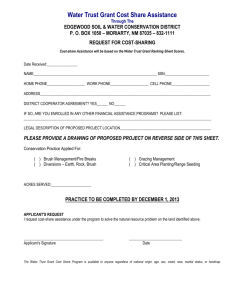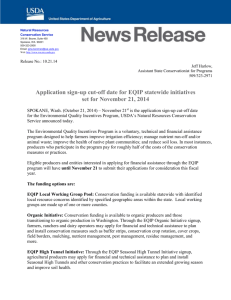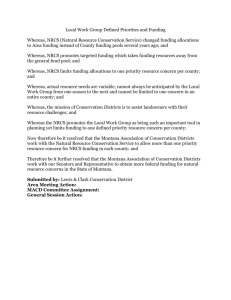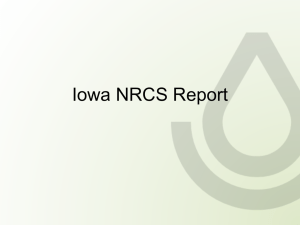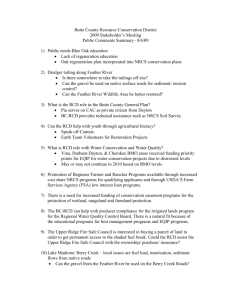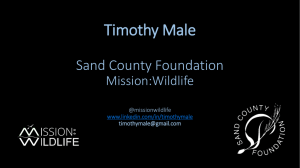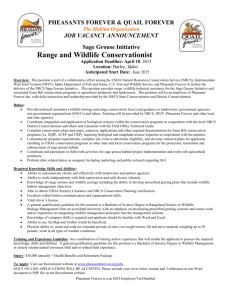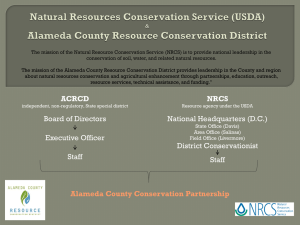Cost Share Programs
advertisement
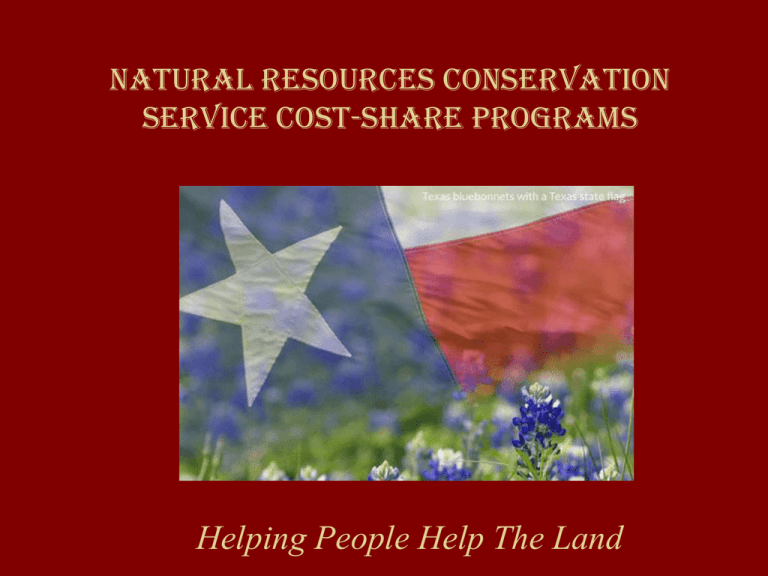
Natural Resources conservation service Cost-share Programs Helping People Help The Land USDA-Natural Resources Conservation Service • Conservation Technical Assistance (CTA) • Environmental Quality Incentives Program (EQIP) • Wildlife Habitat Incentives Program (WHIP) Conservation Technical Assistance • Voluntary Program • Available to land owners/operators at no cost. • Often results in a conservation plan. Conservation Technical Assistance A Conservation plan includes: • Producers objectives/goals; • Aerial photograph of your operation; • Soils map and descriptions; • Resource inventory; • List of your treatment decisions; • Location and schedule for applying conservation practices. EQIP • EQIP: – Voluntary program that provides financial and technical assistance to agricultural producers. • Sign-Up: – Continuous however, NRCS establishes application “cut off” deadline dates for evaluation and ranking of eligible applications. EQIP • NRCS: – Works with landowners to develop contracts and implement conservation practices that address environmental natural resource problems and sustain food and fiber. • Payments: – Made to producers once practices are completed according to NRCS requirements. EQIP • Rates: – Up to 75% cost-share for standard contracts and 90% for beginning, limited resource or socially disadvantaged farmers and ranchers. • Payment limitation: – $300,000 per individual. • Contract length: – Minimum 1 year after implementation of last scheduled practice, Maximum 10yrs • Sign up: WHIP – Continuous • Purpose: – Help landowners or lessees develop and improve wildlife habitat. – Protect , restore, develop or enhance fish and wildlife habitat. • Eligible land: – Tribal land, private agricultural, state and federal lands. WHIP • Payment Limitation: – 50,000/person or legal entity/year. • Rates: – Up to 75% cost-share for standard contracts. Up to 90% cost-share for historically underserved. – Applications typically ranked once a year. Conservation Program Eligibility • Limited to individuals/entities making less than $1 million/yr average adjusted gross farm income (AGI). • Unless 66% or more of the income comes from farming, ranching or forestry. • Secretary of Agriculture can waive AGI limit for projects on environmentally sensitive land. Thank you for your time 522 Main Street Alfredo Muñoz Rangeland Management Specialist alfredo.munoz@tx.usda.gov Junction, TX 76849 Phone #: (325) 446-2717 x 3 www.tx.nrcs.usda.gov
